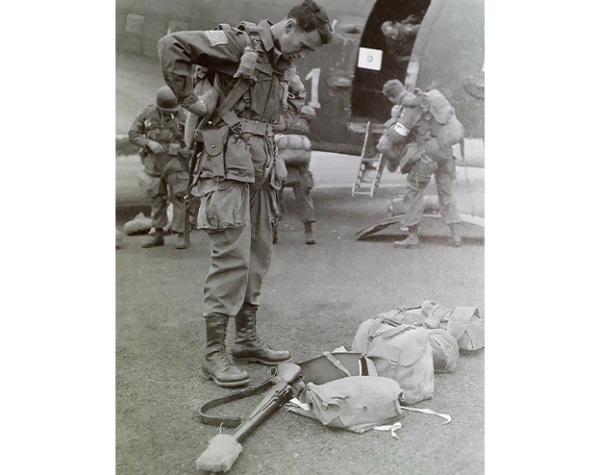Timeline
-
January 14 1944
The 507th and 508th PIR in Northern Ireland -
Beginning of February 1944
SHAEF - Operation Neptune -
February 8 1944
Major General William C. Lee is replaced temporarily by Don F. Pratt -
February 13 1944
The 82nd Airborne Division settles in England -
February 28 1944
The IX Troop Carrier Command's US Airborne Pathfinder School settles in England -
March 1st 1944
The Airborne Command becomes the Airborne Center -
March 14 1944
Brigadier General Maxwell D. Taylor is appointed commander in chief of the 101st Airborne Division -
April 1944
Creation of Airborne "Phantom Divisions" -
End of March 1944
The 504th PIR joins England -
May 18 1944
The objectives of D-Day -
May 28 1944
D-Day objective changes -
Night of the 5 to 6 June 1944
Operation Titanic -
June 6 1944
D-Day: The longest day -
June 6 through 7 1944
Gliders landing -
July 3 and 4 1944
Drop in Dutch New-Guinea -
July 10 1944
The 101st Airborne Division returns to England -
July 13 through 14 1944
The 82nd Airborne Division returns to England -
August 2nd 1944
Activation of the 1st Allied Airborne Army -
August 15 1944
Operation Dragoon -
August 27 1944
Ridgway at the head of the XVIII Airborne Corps -
September 17 1944
Operation Market Garden -
End of October 1944
Brigadier General James M. Gavin receives his second Major General star -
During November 1944
82nd et 101st Airborne Division: ordered to rest -
November 29 1944
The 11th Airborne Division in the Philippines -
December 16 1944
Battle of the Bulge -
December 25 1944
The 17th Airborne in the Battle of the Bulge

September 17 1944
Operation Market Garden
On 17 September 1944, as part of Operation Market-Garden, 14,019 paratroopers and 478 gliders from the 82nd and 101st Airborne Divisions attached to the 1st Allied Airborne Army parachuted into Nijmegen and Eindhoven in Holland.
In early September 1944, Field Marshal Montgomery proposed a plan to end the war before Christmas. This new large-scale operation involved bypassing the Siegfried Line to allow Allied troops to penetrate the heart of Germany. The operation began on 17 September. The first phase, ‘Market’, consisted of a massive parachute drop of airborne divisions and gliders. The second phase, ‘Garden’, was a ground assault by the British 30th Corps. The 82nd US Airborne’s mission was to jump south of Nijmegen and seize the Grave and Waal river bridges. The 101st US Airborne was to jump north of Eindhoven and seize the bridges at Son and Veghel, while the 1st British Airborne, reinforced by the 1st Polish Parachute Brigade, was to jump near the Arnhem bridges and seize the Oosterbeek railway bridge.

